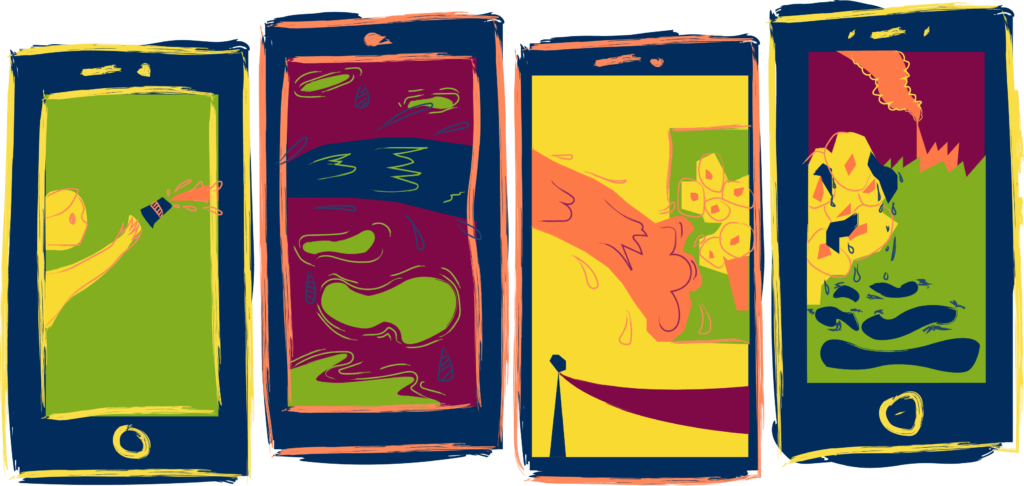WHAT IS MORE IMPORTANT: ART OF LIFE?
The attack on paintings as a message for the environment
by M. De Fre e G. Mondoni
It started with the cream pie hurled at the Mona Lisa, the gesture justified with the phrase “it’s for the environment.”
It continued with the tomato soup that Phoebe Plummer and Anna Holland threw at Van Gogh’s Sunflowers painting and then the mashed potato that ended up on a Monet painting.
But this list has less to do with a recipe than with a series of gestures -for many dastardly ones- that occurred this year in protest against authorities who do not care about the environmental situation that affects each of us.
And that’s just to name a few, not to mention those who have tied themselves to the Laocoon statue and those who, like Phoebe herself, have hit stations that extract fossil fuels.
What now takes the dramatic name of the Last Generation seems to be the only group of people, and therefore of young people, who care about the environmental issue and who are shouting, with perhaps justifiable gestures, a question that does not, however, have to do with them alone.
Starting from this excuse each of us is forced to look again, perhaps even with a certain irony, at the complete “picture” that is presented to our eyes, (even according to each one’s opinions).
Just consider, scrolling through social media, or for a few, flipping through newspapers and watching TV, how easily this news has spread. So much that we found ourselves overwhelmed by a myriad of opinions, justifications, comments and reproaches without even taking the time to understand.
But we would be mistaken if we reduced the end of the discourse to a mere immediate reaction, without taking the time to observe it.
Why hurl food or make gestures that some people consider reckless, if one does not have a “good” reason to do so?
This is what each of the activists, from “Just Stop Oil” or other groups, have been trying to prove: that the only way to draw attention to a real problem is to wreak havoc on what seems to concern everyone most, such as a defaced painting.
Trying to observe the “problem” they pose to us, saying it bluntly in our faces in the words of Phoebe herself – who threatens that in a very few years we won’t even have food to eat, let alone paintings to look at – it becomes clear that perhaps there is so much more behind their actions that we would be the naïve ones if we ignored their reasons.
So the question, “what is more important: art or life?” suddenly becomes familiar when we consider that data show that in about fifteen years there will be no more snow to ski on, and then, one is forced to reconsider first of all what we care about and what we want to retain, to keep alive, of all the experiences we have every day so much that we never want to lose them.
Is it justifiable to react to behaviors like this with a rebuke, calling it nothing more than nonsense? Or is it perhaps time to get to the root of this too, even if it seems so far apart from our interests?
Is the snow just a pretext, as well as the vegetables and fruits that will no longer grow in our gardens in a few years? Let’s really look at what each of them tried to tell us, let’s look at the bottom of that soup and of that mashed potato.
Let’s ask the question: aren’t Phoebe, Anna, and each of them telling us that all of these issues affect the future of each of us, regardless of how much snow and fruit affect us?
It becomes a reminder to those of us who are so fond of what we love, of the good air we breathe, that we marvel at the dolphins returning to the Venice canal.
And perhaps that issue that is so hostile, sometimes so incomprehensible that it has risked so much only to become nothing more than a fad of the moment, such as that of climate change, is instead what should concern us most of all, what should call for our attention.
The life that we want to live and that we desire for the future of the people we love is not dictated by a whim, a craving, or an immediate reaction such as the one these gestures elicited.
That painting, as valuable as it is, consciously targeted by the activists because it was covered by a shrine, is certainly of inestimable economic and cultural value, but what value can it possibly have when confronted with our future?
It may seem difficult to even equate two such different issues, one seemingly ephemeral and one as vast as life itself.
But it is surprising how much even the everyday things that are most obvious to us are pieces of a larger puzzle.
It may not be enough to pick up a water bottle instead of a plastic bottle to save the world, but in doing so we unwittingly make ourselves part of the message of those who, hurling soup at a painting, ask those who have the power to look at that same world in which they are living too. That Earth that is the greatest gift, that is home for us.
The same Earth that we defend with our teeth when it gives us what we love, like the sunflowers that Van Gogh painted.
For a painting is nothing but the Earth itself as seen through the painter’s eyes. It is nothing but the testimony of a life lived.
And we know that in the end, it itself is worth much more than art.

